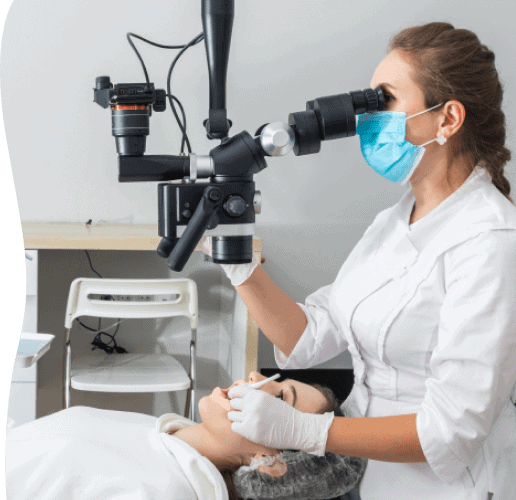Having a straight and healthy smile is something that many people strive for, and two of the most popular options for achieving a straighter smile are Invisalign and retainers. Invisalign and retainers are effective ways to straighten teeth and improve the overall health of your mouth and teeth, but each offers unique advantages and disadvantages. Understanding the differences between Invisalign and retainers is essential to help you decide which option is good for you.
The right option for you will depend on your needs and goals. With the help of your dentist, you can develop a treatment plan that will give you the beautiful smile you’ve always wanted.
Invisalign and retainers are effective ways to straighten teeth and maintain a beautiful smile. Invisalign can be a great option if you want a more discrete teeth-straightening choice, while retainers can be a great option if you want a more lasting result.

Summary of the Article
Invisalign treatments last about 12 months, whereas retainers can take up to 18 months to provide the same results. Invisalign is changed every two weeks, while retainers are one piece of metal that must be adjusted as teeth move.
When it comes to cost, retainers are the clear winner. The average price of Invisalign is much higher than the cost of retainers, making them a better choice for those who don’t have much money to spare.
When it comes to discretion, Invisalign takes the prize. Invisalign aligners are nearly invisible, so they won’t be noticeable unless someone looks closely at your mouth. Retainers, on the other hand, are made of metal, making them much more visible.
You must wear your aligners for at least 22 hours a day. With retainers, once you have achieved your desired results, you can wear them at night as maintenance.
The Pros And Cons Of Invisalign
Pros
- Comfort:
Invisalign is specifically designed with comfort in mind. These aligners are made of smooth, medical-grade plastic designed to custom-fit over your teeth without poking or prodding your gums. - Discretion:
Invisalign offers a discreet treatment option that won’t draw unwanted attention to your mouth. The nearly invisible aligners can be detached anytime and won’t interfere with daily activities like eating, speaking, or brushing your teeth. - Convenience:
With Invisalign, visits to the dentist are kept to a minimum. Patients are instead given multiple sets of aligners to switch out at home as their teeth gradually shift into their correct position. - Versatility:
Invisalign can address misaligned teeth, including crowding, gapping, and overbites. - Quick results:
The average treatment time with Invisalign is less than a year, with some cases being completed in as little as six months. Many patients finish their treatment a year or two sooner than they would have with traditional braces and retainers. - Easy maintenance:
Maintenance and upkeep with Invisalign are effortless. Patients must brush and floss their teeth and take out the trays before eating and drinking. - Better oral health:
Unlike traditional braces and retainers, Invisalign does not require metal wires or brackets, which can trap food and bacteria and cause cavities and gum disease. As a result, one of the benefits of Invisalign is that it can help improve oral health.
Cons
Cost:
Invisalign can be more expensive than traditional retainers for certain orthodontic cases.Potential discomfort:
In some cases, Invisalign can cause more pain than retainers since the trays must be changed frequently and may rub against the teeth more than traditional retainers.Time:
Invisalign treatment generally takes longer than traditional retainers. While you may see results sooner with Invisalign, the treatment process can be much longer.Level of involvement:
Invisalign treatment can be quite involved and require frequent trips to the dentist. On the other hand, traditional retainers can be adjusted at home or replaced when needed, making the process much simpler.Removal when eating and drinking:
Invisalign aligners must be taken out when eating or drinking because food and drink particles can become trapped in the aligners, leading to bacteria growth and staining.Food limitations:
Invisalign can cause tooth soreness when the aligner is pulled out, limiting food choices. This can be a problem for individuals who usually eat harder foods.
The Pros And Cons Of Retainers
Pros
- Protect your confident smile:
One of the benefits of retainers is that they help keep your teeth in the correct position after bracing. It prevents teeth from moving and creates a support system that prevents your teeth from shifting. - Avoid crowding or spacing:
After braces, retainers help keep your teeth from becoming crowded or spaced. This prevents the need for additional orthodontic work down the line. - Support jaw growth in children:
When children wear retainers, they help to develop their jaw muscles, encourage proper growth and help maintain that the teeth stay in the appropriate position. - Easy to clean:
Retainers are made of plastic and metal and are easy to clean and use. They can be rinsed off and used again. - More affordable:
One of the many benefits of retainers is that they are often a more affordable option than braces. They can be adjusted as you go, so you don’t have to spend money on expensive orthodontic appointments to align them. - Comfortable and convenient:
Retainers are made to fit your mouth and are comfortable to wear. They don’t require multiple appointments or adjustment time, so you can wear them anytime.
Cons
- Discomfort:
Though retainers are designed to fit comfortably in your mouth, some patients experience pain at the beginning of the adjustment process. Some soreness and discomfort are normal as your teeth and gums adjust to your new retainer. However, if the soreness and pain become extreme, contact your dentist for adjustments or an alternate retainer option. - Gum irritation:
Since retainers are made of plastic and are worn in the mouth, they can irritate your gums and cheeks. Your gums and cheeks will become used to the retainer over time. If the irritation persists, talk to your dentist about ordering a retainer with a different finish or adjusting the retainer to fit better. - Risk of damage:
Over time, retainers can warp, break, and even harden, which can cause teeth to move out of alignment. - Potential speech impairment:
Wearing a retainer can lead to a lisp or speech impediment because it is a foreign object in your mouth. It will take a few weeks for your tongue to adjust to the shape and design of your retainer and for you to speak normally again. - Cost:
Unfortunately, retainers come with a hefty price tag due to the cost of orthodontic materials and the constant adjustments and replacements. Investing in a retainer is worth it because it will help keep your teeth straight for years.
Types Of Retainers And Invisalign
Types of Retainers
- Hawley Retainer:
A Hawley retainer is the most popular type of retainer used by dentists. It is made of metal wires and acrylic, creating a customised fit for each patient. The metal wires are bent and fixed into a frame that fits around the teeth. The retainer fitting helps your dentist shape your teeth and keep them in the desired position. Hawley retainers can also manage minor orthodontic issues like overbite and crowding. - Essix Retainer:
An Essix retainer is similar to the Hawley retainer but has a clear plastic that helps you achieve a more discreet look. This type of retainer is used to maintain the alignment of your teeth after traditional metal braces. It can also be used to help create a better bite and to address misaligned teeth. - Fixed Retainer:
A permanent retainer is cemented to the back of your teeth, making it more stable and secure than other retainers. This type of retainer is often used to address issues like overbite, underbite, crowding, and crossbite. Fixed retainers can also be used to maintain the results of orthodontic treatment. - Bonded Lingual Retainer:
A bonded lingual retainer is attached to the back of the teeth throughout the length of the arch. This type of retainer is mainly used to hold teeth in place after removing the braces, and it is also often used to straighten crooked front teeth.
Types of Invisalign
- Express:
Express Invisalign is the most basic type of Invisalign. It is used for minor cases of crooked or gapped teeth. The treatment is shortened to 10 aligners and replaced every two weeks until the desired alignment is achieved. - Full Invisalign:
Full Invisalign is the most popular and commonly used type of Invisalign. It is used to manage severe cases of misalignment, including overbites, underbites, crossbites, and more. The treatment plan for full Invisalign covers about 20-30 aligners and takes from 12-24 months. - Teen Invisalign:
Teen Invisalign is designed to meet the needs of teenagers who want a straight smile but may feel overtreated or overwhelmed with complete Invisalign treatment. The aligners are designed to be less visible and have a blue indicator dot to help track progress. This type of Invisalign is designed to address simple problems, such as crowded teeth, overbites, and gaps between the teeth. - Lite Invisalign:
Lite Invisalign is a great option for those who want fast results. The treatment lasts 6-9 months and requires 10-15 aligners. This type of Invisalign is ideal for those who wish to manage minor alignment issues, such as gapped teeth or crowding. - i7 Invisalign:
i7 Invisalign is a fast and affordable treatment for mild bite issues, such as crowding, minor gaps, and misaligned front teeth. It involves using seven aligners and can be completed in about three months. - Vivera Invisalign:
Vivera Invisalign is an excellent option for those who want to achieve the optimal results possible. It includes using 3D scan technology to design the aligners and offers 30% more improvement than other types of Invisalign. It is the right choice for those with severe alignment problems, such as overcrowding or overbites.
Cost Comparison Of Invisalign vs Retainers
The cost of Invisalign and retainers depends on your case and the length of treatment. The estimated cost of Invisalign can start at $6500, while retainers can begin at $200. Your health funds may cover these two, and we strongly recommend you contact your provider so they can give you detailed information about your cover.
How Long Does It Take To Get Results With Invisalign?
The amount of time it takes to get results with Invisalign will vary from person to person and depend on the type of Invisalign treatment you are undergoing. Generally, Invisalign Express treatments are designed to shift your teeth in around 6-8 weeks, while standard Invisalign treatments last 12 to 18 months. Some complex cases may take up to 24 months to complete. For example, a patient undergoing full Invisalign treatment may require 24 months of treatment to achieve desired results and maximum benefits of Invisalign.
How Long Do You Have To Wear Your Retainers
Retainers must be worn for at least one year after removing the braces. After that, it is recommended that you wear your retainer only at night while you sleep.
Invisalign is usually better for minor adjustments and less noticeable in daily life than traditional braces or retainers. However, Invisalign is generally more expensive and may only be suitable for some complex cases. Traditional braces or retainers may be more appropriate in these cases.
Get Outstanding Dental Care with Us Today
At The Smile Space, we believe that comprehensive dental care should be accessible to everyone. Our experienced team is dedicated to providing the highest standard of care, using the latest technology and techniques. If you're looking for a dentist in Sutherland, book an appointment at The Smile Space today!

What Is The Overall Lifestyle Impact Of Invisalign vs Retainers?
Retainers or Invisalign can positively impact lifestyle by helping to reduce overcrowded teeth, misalignment, and bite issues. They help improve a smile’s aesthetics and make speaking and eating easier. With the benefits of Invisalign, people can have the convenience of being able to take out the aligners for activities such as playing sports, eating, drinking, brushing, and flossing. Patients love the benefits of retainers that can help them maintain their desired results after getting braces and can also be used to address mild misalignment.
Maintenance And Cleaning Requirements Of Invisalign vs Retainers
Invisalign requires a high level of maintenance. After every meal, brushing your teeth before wearing your aligners again is essential. It is also advised to brush your aligners daily with a soft-bristled toothbrush and gentle toothpaste and to rinse them in warm water before and after brushing. Additionally, you will need to soak your aligners in a cleaning compound daily to avoid the build-up of bacteria and eliminate any debris that may have built up. Taking out your aligners before consuming food or drinks (other than water) is crucial for eating and drinking. Certain foods, such as chewy or sticky candies and dried fruits, should be avoided altogether. Also, Invisalign aligners must be adjusted every two weeks.
Retainers also require regular maintenance and cleaning. Brushing your retainers with a soft-bristled toothbrush and toothpaste before and after every use is highly recommended to avoid plaque build-up in and around your retainer. You should also soak your retainer in a cleaning formula once daily and take away any accumulated debris. When it comes to eating and drinking, removing your retainer before eating and drinking anything except water is essential. It is crucial to avoid certain chewy or sticky foods and beverages, such as hard candies, dried fruits, and carbonated drinks, that can accumulate on your retainer and be challenging to take out. Additionally, retainers must be adjusted every 4-6 weeks.
Invisalign vs Retainers: A Head-To-Head Comparison on How to Choose Which One Is for You
Retainers or Invisalign are both effective ways to straighten teeth. The right option for you depends on your individual needs and preferences. You can get in touch with your dentist so they can guide you.
Final Thoughts
Choosing the correct procedure for Invisalign vs retainers is vital because each provides different benefits. Invisalign is a more comprehensive orthodontic treatment that offers an efficient and finely tuned process for achieving the desired results. On the other hand, retainers are better for minor corrections and maintenance of the results obtained with braces or Invisalign. Ultimately, the choice between retainers or Invisalign will depend on the type of treatment you need and the specific goals you have in mind.
Please visit your dentist at The Smile Space dental clinic to determine the proper Invisalign treatment fit for your needs and an accurate treatment plan quote.







